The midsize soft-roader market is getting tougher and tougher, and with the launch of the new 2013 Mitsubishi Outlander, first seen at the 2012 Australian International Motor Show, the popular model is now more appealing than ever.
For this review we have tested both the flagship Aspire Di-D turbo-diesel and the LS 2.4 petrol. Both come with all-wheel drive.
2013 MITSUBISHI OUTLANDER – PROS AND CONS
PROS:
- Useful torque in the Di-D turbo-diesel
- One of the larger mid-sized SUVs around
- Plenty of variants to choose from
- Accommodating interior; third row seating
- Safe buy with Mitsubishi’s generous five-year warranty
CONS:
- Automatic CVT transmission saps enthusiasm
- No rear air vents
- Off-road capabilities aren’t particularly class-leading
- Interior plastics improved over previous model, but still behind
2013 MITSUBISHI OUTLANDER – OVERVIEW
You might not recognise the face of the new Outlander as it showcases an all-new look incorporating the company’s latest design language. The styling has been conjured up following the philosophy of being ‘solid, safe, and simple’.
Underneath it all, the new model’s cabin has been redesigned as well and now features higher quality finishes and materials, with more technology at the passenger’s disposal.
The new Outlander is available in three main variant levels. There’s the entry-level ES and the mid-range LS, which are available in 2WD and 4WD forms, and the top-spec Aspire which is only available with 4WD.
Each of these come with three different engine choices. The entry-level 2WD ES and LS are only available with a 2.0-litre petrol producing 110kW and 190Nm.
The 2.4-litre petrol, available on on the 4WD LS and Aspire, produces 124kW and 220Nm, while the Di-D 2.2-litre diesel, also available on the 4WD LS and Aspire, produces 110kW and 360Nm.
Prices for the ES start at $28,990 for the base model petrol 2WD.
Prices for the models tested here, the LS AWD petrol and the Aspire AWD Di-D, start at $38,990 and $45,490, respectively.
2013 MITSUBISHI OUTLANDER – ACCOMMODATION AND EQUIPMENT
The new Outlander feels like a large SUV from the pilot’s perspective. Sitting in the driver’s seat gives you a high sense of security over and above the cars on the road. For most SUV buyers, this is going to remain an important and high-priority trait.
Looking around the cockpit of the LS, the materials look and feel pretty standard. The interior isn’t as luxurious or as elegant-looking as what’s offered in some of the rivals, like the recently introduced 2013 Honda CR-V. However, the flagship Aspire presents a clear step up in class, with heated leather seats and wood grain touches.
Seating is comfortable for the front passengers, with well bolstered seats which are easy to adjust into your desired driving position.
Rear occupant seating isn’t compromised, with plenty of space to throw a party, if need be. But here, we see the Outlander is a vehicle neglecting to include rear mid-to-upper level air vents. In a medium to large SUV like this, where many buyers have families to cart around, rear vents are a valued demand these days.
All Outlander models are equipped with a fuel-saving ‘ECO’ mode, which is available at the touch of a button. The LS and Aspire models gain an ‘ECO score display’ function as well, whereby driving information is reviewed for each designated time period and a gauge is displayed using five leaves. The system helps to encourage environmentally friendly driving behaviours.
Standard features for all Outlanders include a CD player with six speakers, keyless entry and ignition, Bluetooth connectivity, voice recognition, seven airbags (driver and passenger, side, curtain, and knee), ABS, EBD, Hill Start Control (HSC), cruise control with steering wheel controls, and climate control air-conditioning.
Aspire models score an indulgent leather interior, seven seats, 18-inch alloys, auto headlights and rain-sensing wipers, power front seats, and chrome exterior trimmings. A reversing camera is also standard on the LS and Aspire.
Our Aspire example came with the optional Premium Package ($5500) too, which includes Adaptive Cruise Control (ACC), a power tailgate, satellite navigation, and a premium nine-speaker Rockford Fosgate audio system including a sub-woofer in the cargo area.
Speaking of the cargo area, all variants offer 477 litres with the cabin in a regular five-seat configuration. With the second row of seats folded flat, 1608 litres is opened up. Obviously, with the third row of seats in place, which are really only suitable for children, cargo space is restricted.
2013 MITSUBISHI OUTLANDER – DESIGN AND SAFETY
Visually stimulating aren’t exactly two words that come to mind when you talk about the Outlander. But turning heads isn’t exactly what this vehicle is all about. Mitsubishi has developed an entirely new global design, which is likely to turn heads in some way, and the new Outlander is the first model to adopt it.
It uses a clean, conservative visage with softer edges than the previous models. It also loses the Mitsubishi trademark protruding ‘shark nose’ design around the front grill.
The front end is still dominated by a stern, straight bonnet line, only with a less swollen centre grill. Flowing through the back, the Outlander appears more rounded, weighty, and less athletic than what you might be used to.
The rear tailgate loses the drop down bumper bar layout, which was included for easier load access. The design was highly praised on the previous model. Fortunately, Mitsubishi knows this and has designed the new tailgate to drop further down to the ground to compensate. Unfortunately, the total cargo area is reduced, measuring in at 477 litres as mentioned. That’s a monstrous 112 litres smaller than the preceding model.
Ensuring maximum safety, traction and stability control are standard, as is brake force distribution. Australia’s ANCAP has awarded all Outlander variants the full five stars.
To further boost stafety, you can opt for a forward collision mitigation system, which is Mitsubishi’s radar-based system that can automatically apply the brakes when there is a sudden reduction in the distance in between you and the vehicle in front. It has been implemented to help avoid collisions or at least reduce impact damage in the event of a collision.
2013 MITSUBISHI OUTLANDER – ON THE ROAD
The benefit of a soft-roader, for many drivers, is the advantage of driving a car the size and presence of an SUV without feeling like you’re driving a truck. This goes without saying in the Outlander, no matter what variant you go for. Getting around town and country is a laid-back and painless task. This is made possible thanks to lightly weighted steering and great vision, especially peering through the front and sides.
The ride is soft and comfortable, and ideal for long trips and city chores. This inadvertently compromises handling composure though, with very evident body roll.
The fuel economy of the LS 2.4-litre petrol is officially rated at 7.5L/100km, which is not too bad for a relatively sizable AWD vehicle. We couldn’t quite match the ADR’s figures. The best we could achieve during our test was an average of 8.2L/100km.
The Di-D Outlander stands out as the most capable engine in the range. With 360Nm of torque on tap, available from 1500rpm to 2750rpm, it’s the most versatile choice for towing and in terms of fuel economy. (Towing capacity is 1600kg, and 2000kg for the Di-D models.)
In fact, fuel economy is fantastic in the Di-D. Official figures show a 5.8L/100km rating, while we neared that with 6.0L/100km during our test. This is definitely an attractive quality to consider when deciding between the petrol and the diesel.
Equipped with a CVT automatic transmission, the 2.4 petrol isn’t as breathless as we first thought, however, the CVT does make it seem sluggish if you’re not paying attention to the climbing speedo.
The lack of gear shifting makes increasing speed smooth and as economical as possible, but it lacks the sort of tempo and enthusiasm we’ve all come used to. There’s no pulsing revs which start over with every gear change. Instead, the CVT boringly buzzes the engine at pretty much constant engine revs until you reach your desired speed.
What helps with the Di-D model is the use of a six speed automatic. It seems to manage and make use of the power and torque more confidently and engagingly.
Although, when driving gingerly, we found the six-speed often selects higher gears prematurely, which can flare some noticeable labouring and rough vibrations from the engine. Some may say that this is just a typical trait of a diesel engine, but we’ve seen smoothness and harmoniousness achieved in other vehicles with a similar layout.
2013 MITSUBISHI OUTLANDER – OFF THE ROAD
The off road capabilities of the Outlander won’t be the reason why you would buy this car. Serious off roading isn’t really what it’s designed to do. For that, you need the unstoppable 2013 Mitsubishi Challenger.
Having said that, it blissfully soaks up bumps and potholes on a rough dirt road very well, supplying you with plenty of traction and decent ground clearance (215mm, 190mm on the Di-D).
The six-speed transmission in the Di-D doesn’t provide you with the full control that is sometimes needed when off-roading. For example, we needed to descend down a rocky hill, so we manually selected lower gears in order to assist with braking. Once 3500rpm was reached, the SUV took away our control and upshifted automatically. It didn’t allow us to downshift again either.
The LS CVT transmission isn’t much better off road. You can ‘manually’ select gears using the controls, although, the gear changes are very slurred. Even when you have selected a gear, the transmission seldom feels like it has a solid grasp of a cog, it always feels like it’s in the middle of a gear change.
During our test, we placed the LS through a moderately technical piece of terrain to assess wheel travel and articulation. To our shock, we became stranded with one wheel raised in the air at the front and the opposite rear wheel in slushy mud.
This not only caused a front wheel to spin and take up all of the engine’s torque, despite the centre diff lock being engaged (no limited-slip differential front or rear), it also caused the engine, transmission, ABS sensor, and AWD system warning lights to unremittingly flash and chime in the dash until we turned the car off. The issue could’ve potentially been isolated to our test vehicle and our circumstances.
If all you want to do is have a bit of fun though and play in some friendly mud, the Outlander 4WD is more than adequate. Simply leave it in auto mode and go for your life.
Overall, nice little weekend camping trips are better suited to the Outlander over the more serious stuff. Again, this is despite the centre diff lock button giving off a slightly insincere sense of ability and off-road readiness. It’s a shame, as Mitsubishi off-roaders are normally right up there with the best of them, if not leading the pack.
2013 MITSUBISHI OUTLANDER – VERDICT
If you’re shopping for an SUV, the Outlander doesn’t really jump out as the soft-roader to purchase for any particular reason. The accommodation and equipment levels are comparatively up to standard, safety equipment isn’t lacking in any way, and the design and appearance, albeit modern, doesn’t really turn heads.
As we mentioned at the very beginning, the medium-size SUV market segment is a strong and very competitive one. In this case the rivals, we feel, simply stand out slightly ahead.
Comparing prices, you can pick up a higher build quality, better handling, and similarly equipped Volkswagen Tiguan, new Toyota RAV4, or new Honda CR-V for around the same price as the respective Outlanders.
On the road, the SUV proficiently does the job. The engines aren’t excitingly powerful and the handling ability isn’t thrilling. There’s no area the Outlander is substandard, but nor does it stand up as a cut above the rest. This could be the Outlander’s winning recipe?
Like with most Mitsubishis it’s plain Jane, safe-option, no-fuss motoring. And that’s why many people will buy this vehicle; the SUV for non-car enthusiasts. It’s the vehicle that turns up to work everyday, puts in its hard yards, does overtime whenever it can, and never complains.
2013 MITSUBISHI OUTLANDER – THE COMPETITORS
Ford Kuga Titanium – 1.6-litre turbocharged four-cylinder petrol, 134kW/240Nm – 1653kg – $44,990
New model has just arrived in Australia, now with a 1.6-litre EcoBoost replacing the thirsty yet better-sounding five-cylinder. Fuel economy now down to 6.7L/100km.
Honda CR-V VTi-L – 2.4-litre naturally aspirated petrol four-cylinder, 140kW/222Nm – 1580kg – $42,290
One of the better SUVs in this market, in our opinion. High quality interior, very innovative and versatile, and powerful efficient engine. Not class-leading when it comes to off road.
Hyundai ix35 Highlander – 2.4-litre naturally aspirated petrol four-cylinder, 130kW/227Nm – 1585kg – $35,490
The ix35 remains as one of the most popular vehicles in this segment, a frequent in the top three Australian monthly sales figures. Decent power and torque, and a decent price for the flagship petrol.
Kia Sportage Platinum – 2.0-litre turbo-diesel four-cylinder, 135kW/392Nm – 1588kg – $40,710
Sharp and modern styling certainly stands out. Torquey turbo-diesel with decent off-road skills. Packed with features. The flagship is rather expensive for of a Kia.
Nissan X-Trail TL – 2.0-litre turbo-diesel four-cylinder, 110kW/320Nm – 1566kg – $45,240
Also one of the top-sellers in this category, a regular in the top three. Diesel is down on power, but the torque makes up for it. The second most-expensive in this lineup, behind the Outlander.
Toyota RAV4 Cruiser – 2.5-litre naturally aspirated petrol four-cylinder, 132kW/233Nm – $42,990
New model has just arrived in Australia, sporting the new ‘face of Toyota’. Looks much sharper. It’s also more fuel efficient than ever before.
Volkswagen Tiguan 155TSI– 2.0-litre turbo-petrol four-cylinder, 155kW/280Nm – 1642kg – $42,990
The most powerful offering in this segment is also one of the better handling options. Reasonably priced, for a European vehicle, with plenty of technology and equipment.
2013 MITSUBISHI OUTLANDER – SPECIFICATIONS
[column width=”47%” padding=”6%”]MODEL
2013 Mitsubishi Outlander Aspire Di-D AWD
ENGINE
2.2-litre turbo-diesel four-cylinder
ENGINE SIZE / COMPRESSION RATIO
2268cc / 14.9:1
BORE X STROKE
86mm x 97.6mm
POWER
110kW@3500rpm, 360Nm@1500rpm-2750rpm
POWER TO WEIGHT RATIO
14.6: 1 (kg:kW)
KERB WEIGHT
1610kg
HEIGHT / WIDTH / LENGTH
1680mm / 1800mm / 4655mm
DRIVETRAIN
Six-speed auto transmission, four-wheel drive
BRAKES
F: Ventilated discs
R: Discs
WHEELS / TYRES
F and R: 18- x 7.0-inch, 225/55 R18
FUEL TANK CAPACITY
60 litres
FUEL TYPE
Diesel
FUEL CONSUMPTION
Tested average: 6.0L/100km
Official average: 5.8L/100km
PERFORMANCE
0-100km/h: not tested
PRICED FROM
$45,490
WARRANTY
Five-year/130,000km
[/column]
[column width=”47%” padding=”0″]MODEL
2013 Mitsubishi Outlander LS AWD petrol
ENGINE
2.4-litre naturally aspirated four-cylinder
ENGINE SIZE / COMPRESSION RATIO
2360cc / 10.5:1
BORE X STROKE
88mm x 97mm
POWER
124kW@6000rpm, 220Nm@4200rpm
POWER TO WEIGHT RATIO
12.3: 1 (kg:kW)
KERB WEIGHT
1530kg
HEIGHT / WIDTH / LENGTH
1680mm / 1800mm / 4655mm
DRIVETRAIN
CVT (continuously variable) auto transmission, four-wheel drive
BRAKES
F: Ventilated discs
R: Discs
WHEELS / TYRES
F and R: 16- x 6.5inch, 215/70 R17
FUEL TANK CAPACITY
60 litres
FUEL TYPE
91 RON
FUEL CONSUMPTION
Tested average: 8.2L/100km
Official average: 7.5L/100km
PERFORMANCE
0-100km/h: 9.0 seconds (tested) petrol
PRICED FROM
$38,990
WARRANTY
Five-year/130,000km
[/column]
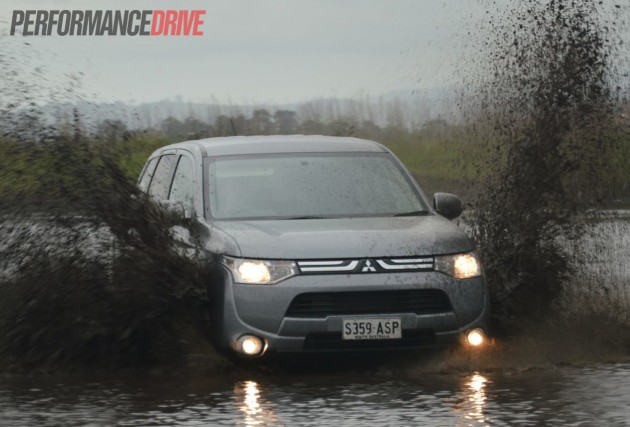

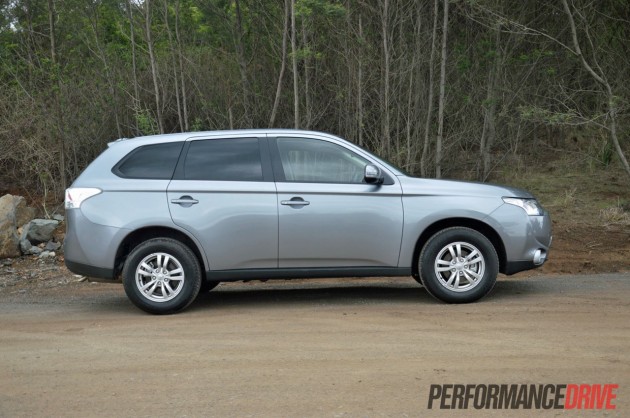
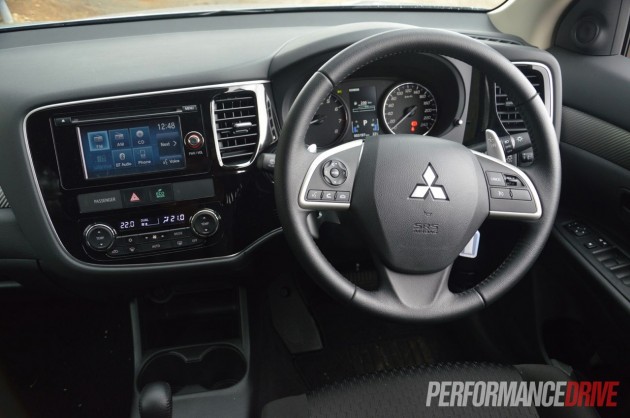
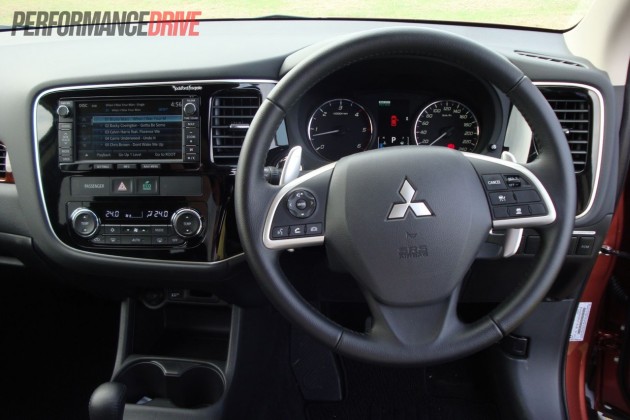



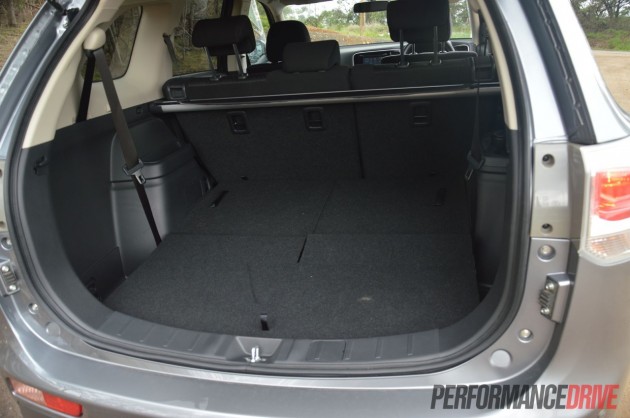
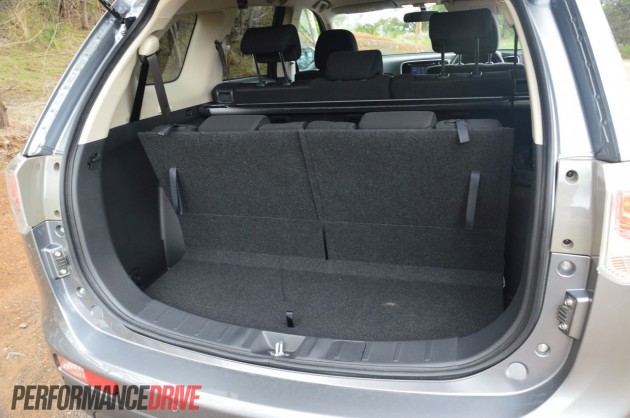
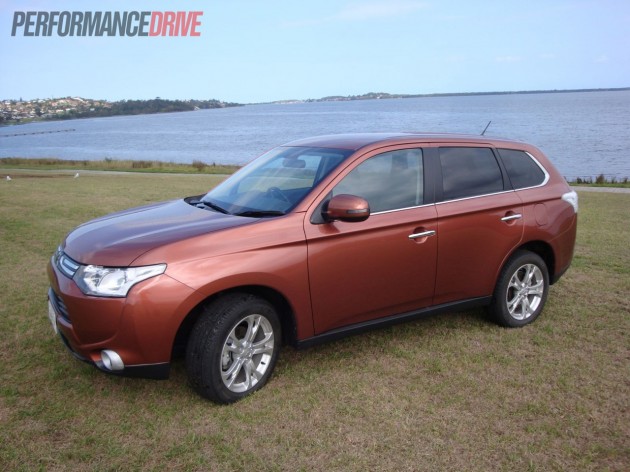
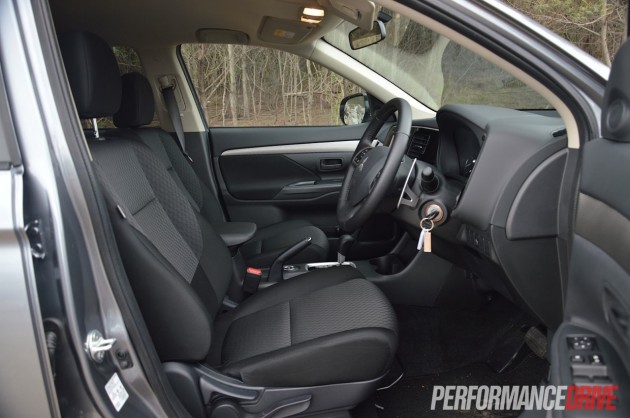

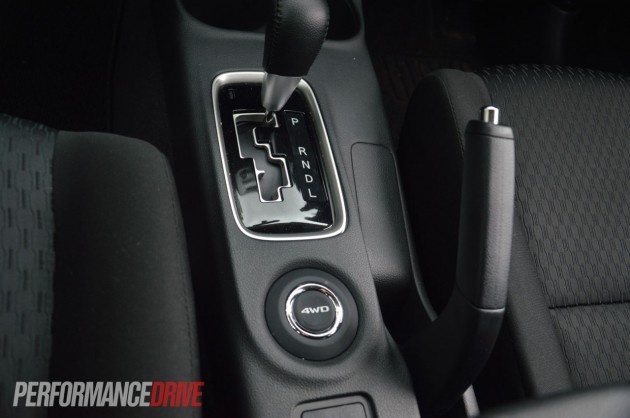
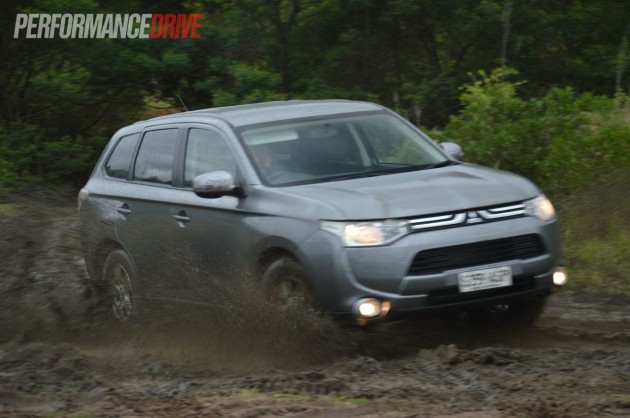
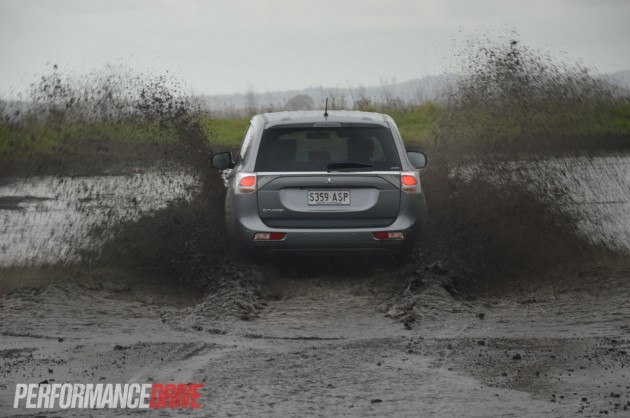

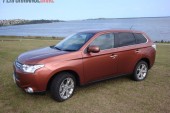

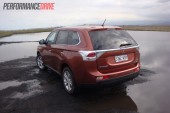



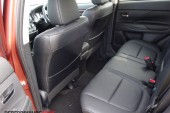
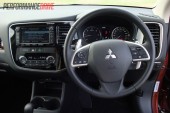

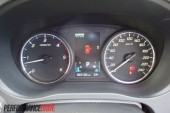

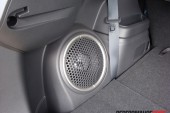
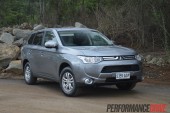
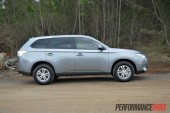
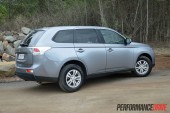
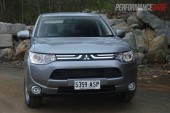
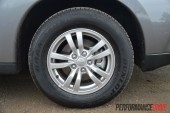
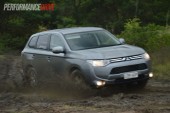

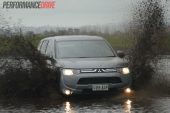
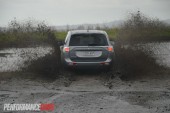
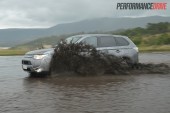
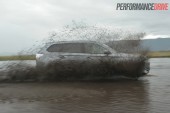


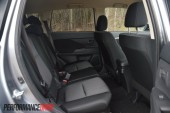
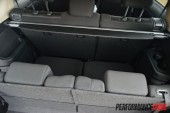
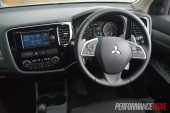
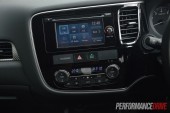
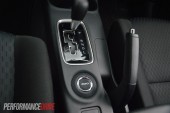
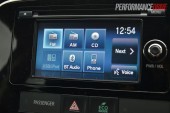
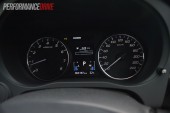
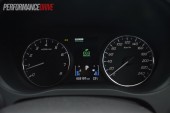

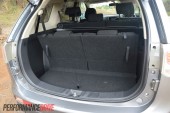

I’ wondering if the 4WD system is any good for driving on sand like on Fraser Island.